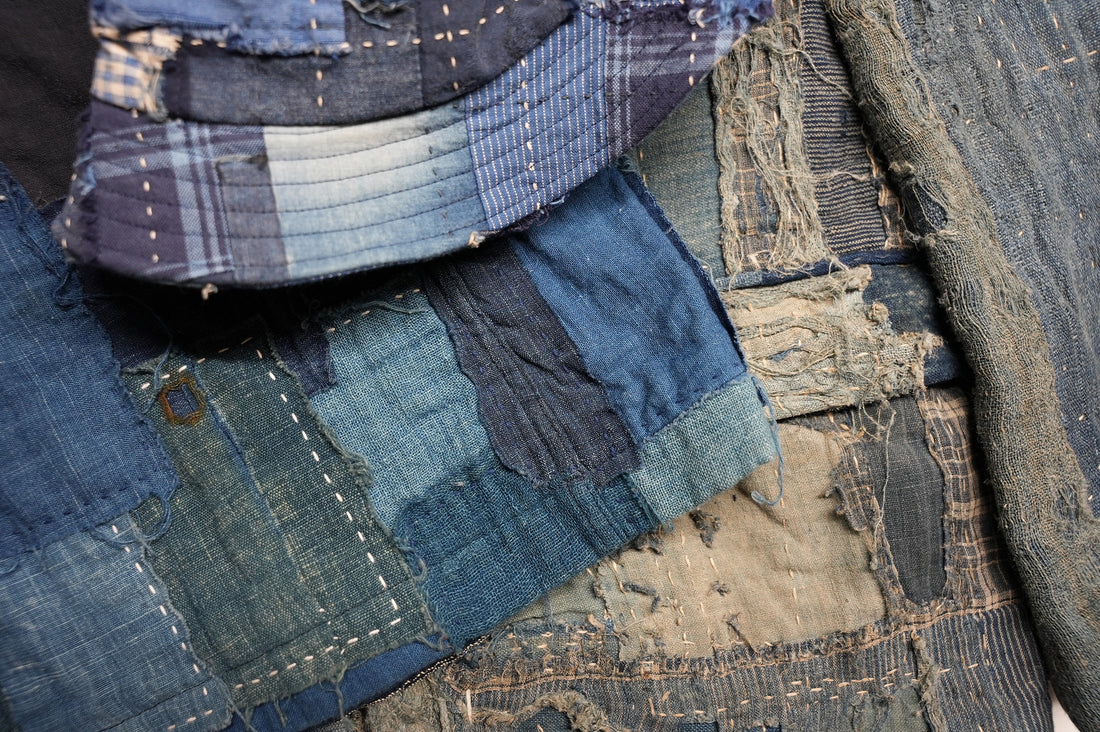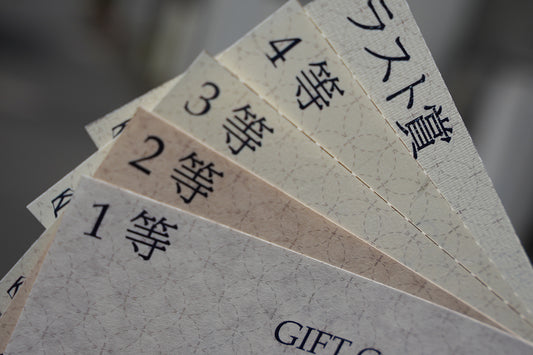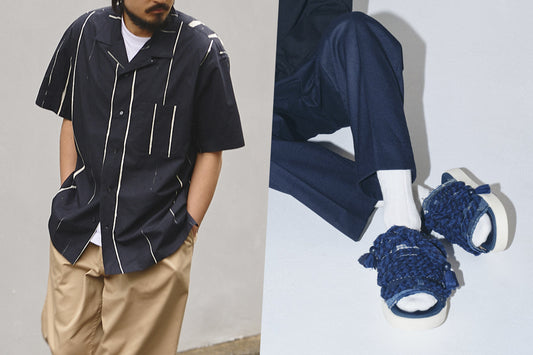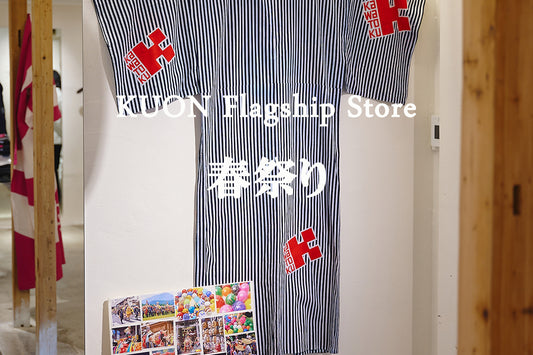Hi, this is Shohei.
Let’s dive right in. Have you known that there are 3 kinds of "Boro" KUON uses?
They are "Vintage Boro", "Upcycled Boro" and "Upcycled Boro Type02". We sometimes call "Vintage Boro Patchwork" instead of "Upcycled Boro".
When I first joined KUON, my mind was a jumble, not understanding which was which. But now, three years later, I finally understand enough to be able to explain them, so I will write about the three types of Boro.
What is "Boro"?
Boro is now highly regarded as an art form worldwide especially in Europe, but what exactly is a Boro? Let's start from the beginning.

Boro was born before the Edo period (1603-1867). It was born as fabrics for clothing and blanket for winter in the Tohoku and Hokuriku regions, where winters are long, snowy, and cold.
At that time, clothing and cotton were very scarce in those regions. Therefore, people continued to wear even the minimum necessary clothing for survival, such as workwear, underwear, and pajamas, until they were worn out and torn.
↑One of our collections. A Boro shirt originally used as workwear, to which a collar and buttons are estimated to have been attached around the Meiji period (1868-1912).
Even after the clothes were carefully worn until they were torn, people continued to wear it by manually patching another piece of linen, cotton, or Boro onto the holes and then wearing it again. *It is said that this is the begining of Sashiko stitching.
Everytime the clothes were torn again, it was repaired again and again. As a result of repeated repairs, the fabric was layered. The thicker fabric was also used for protection against the cold.
Using strong cotton threads, which were precious at that time, the stitched clothes have a very tasteful look. Repairing precious clothing with precious threads...The layers of fabric, with the old cloth at the bottom and the new cloth at the top, give a sense of the passage of time and the warmth of people's care for their possessions.
The fabrics, which seem to condense a certain Japanese spirit, have come to be recognized around the world as "BORO.
"Lapse of time"
"Taking good care of things"
"Wisdom to enrich lives"
The fusion of all these elements gave birth to Boro.
Incidentally, Boro, which are rare and expensive nowadays, were a symbol of poverty for the people at that time, and when they hung them outside to dry after washing, they hung them in the most difficult-to-see places.
I wonder if the people back then would be surprised if they knew the price of Boro today...
The stitching(Sashiko) technique of making layers of Boro is also filled with the wisdom of the people of that time. I will introduce the Sashiko stitching technique at another time because it is a long story.
One more digression: "Sakiori" which KUON has used since its early days as well as Boro, was actually born from the same background and mentality.
Let's take a look at the three kinds of Boro we use.
Boro that KUON uses
Vintage Boro





"Vintage Boro Blazer", one of KUON's signature style.
No need to explain. "This is BORO". You can feel the time of eternity in the melting, tattered fabric and the layers of patches, and the misshapen hand stitches are also lovable. The ageing created only by hand weaving with hand spun yarn is exceptional.


The designer's accumulated pattern-making skills and the technics of the master tailor who makes the most of these skills make this a "KUON's Boro Blazer" rather than a "blazer made of Boro".
Although the fabric is thick and uneven, it is very comfortable to wear because it is tailored with the best techniques.
There is a funny and interesting story that the master tailor told us. When he ironed a Boro fabric, tears began to flow without particular reasons and did not stop . When he managed to finish ironing the garments and moved on to the cutting process, he realized the reason for his tears. He said that chili peppers were coming out from between the layers of Boro. The original owner of this Boro was probably a farmer or a merchant who dealt in agricultural products. This is an example but, each Boro has unique long stories.

Boro Blazers are sometimes displayed in museums or purchased as displays, but the truth is that they should actually be worn. If it is torn or unraveled, it can be repaired with Sashiko stitches and add more history on them. This can be the essential luxury.
You can check more Products made of Vintage Boro.
Let's move on to the second "Boro".
Upcycled Boro

The remnants from the production process of KUON's Boro Blazers introduced earlier were kept, not thrown away, and "Otsuchi Sashiko", Sashiko craftsmen who live in the modern age, made patchwork fabrics with their Sashiko.
This fabric is a fusion of the "mottainai spirit" of the people of those days and the people of today, who cherish things. We call it "Upcycled Boro".

Also,
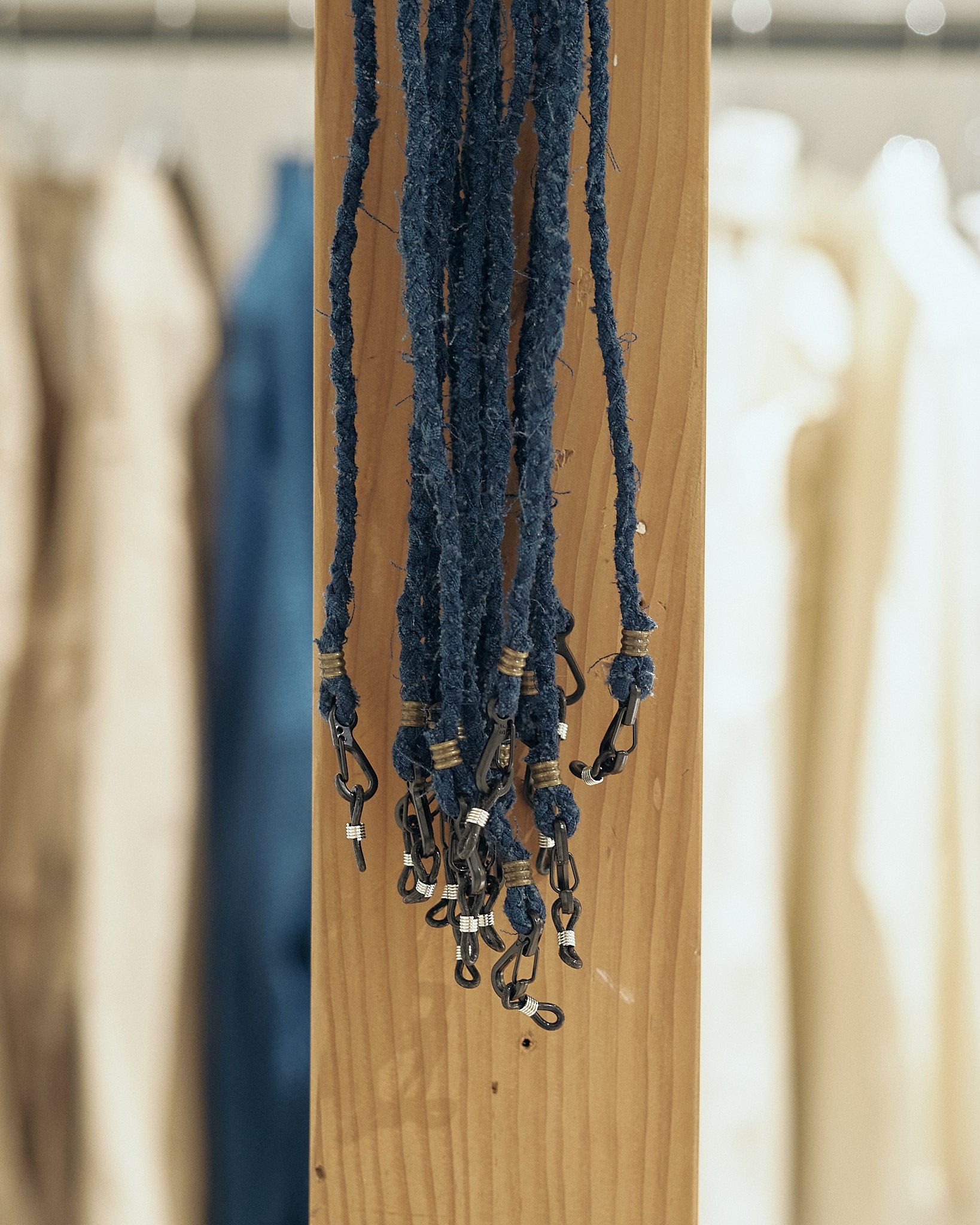
VINTAGE BORO Device Strap is made from remnants fabric of Vintage Boro Blazer. It can be used in many ways, so don't forget to check it when you come to our store.
You can check more Products made of Upcycled Boro.
Here is the third "Boro".
Upcycled Boro Type02


"Upcycled Boro Type 02" is a patchwork of discarded scraps from the clothing production process. It is invented based on the experience of creating "Upcycled Boro" from "Boro". it can be considered as a modern version of Boro.

The patchwork is not only patched, but also treated to prevent color transfer, which is also modern. The navy color has been washed to give it a Boro-like appearance. Ozone washing, which has a lower environmental impact than conventional washing process, is used.

Of course, scraps from the factory come in a variety of colors. The photo above shows a black version produced in the past.
As I write this article, I revisit how the aesthetic of traditional Japanese people is inspiring, and I would like to pass it down to the future through KUON clothes. When you have a chance to visit Tokyo, don't forget to stop by our store to see, touch and feel it.
Thank you!
here are the links to the products made of fabrics mentioned in this article.

